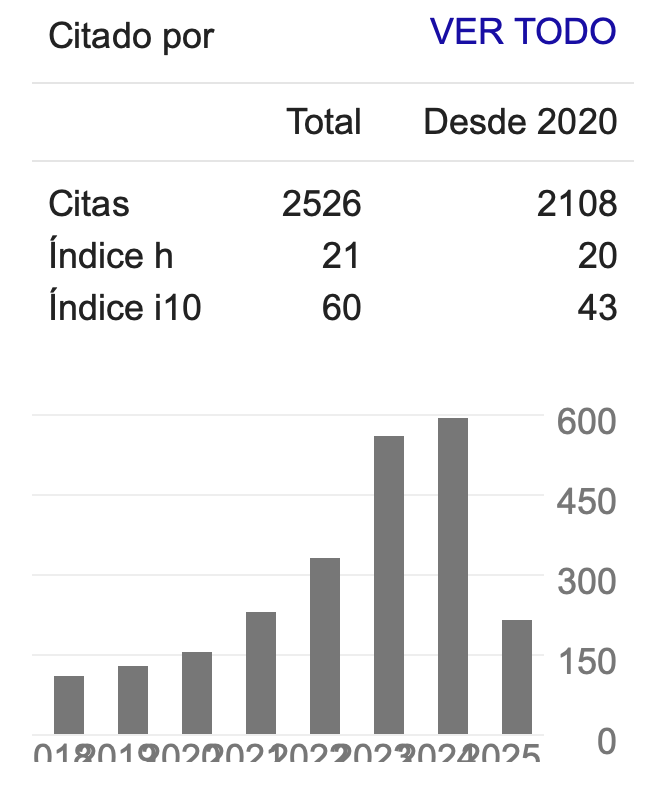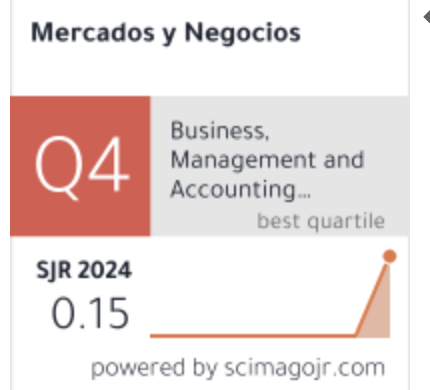Analysis of the January Effect in Time Series of Mexican Stock Market Indexes
DOI:
https://doi.org/10.32870/myn.v0i40.7371Keywords:
Efficient Market Hypothesis, calendar anomalies, January effect, Mexican stock market.Abstract
The current article has the research objective to search for empirical evidence of the January effect within the time series of the IPC and the sector indexes of the Mexican stock market using econometric GARCH analysis. The dataset is formed by the log returns of the daily closing prices corresponding to the IPC as well as the sector indexes covering the period from 01/01/2010 to 12/31/2018. The main results of the article are as follows: Based on the January effect the Efficient Market Hypothesis in its weak form sense cannot be rejected for the Mexican stock market as the results do not provide significant evidence of the existence of the respective calendar anomaly within the analyzed time series of the IPC and the different sector indexes.References
Asteriou, D. and Kavetsos, G. (2006). Testing for the existence of the 'January Effect'. Applied Financial Economics Letters, 2, 375–381. https://doi.org/10.1080/17446540600706817
Barberis, N. and Thaler, R. (2003). A survey of behavioral finance, in: G.M. Constantinides & M. Harris & R. M. Stulz (ed.), Handbook of the Economics of Finance, edition 1, volume 1, chapter 18, pages 1053-1128, Elsevier.
Bolsa Mexicana de Valores (2019). Sectoriales Analíticos. México: BMV. https://www.bmv.com.mx/es/indices/ana liticos/
Cabello, A. and Ortiz, E. (2003). Day of the week and month of the year anomalies in the mexican stock market. Revista Mexicana de Economía y Finanzas, 2(3), 217-241.
de Arce, R. (1998). Introducción a los modelos Autorregresivos con Heterocedasticidad Condicional (ARCH). Programa de Doctorado en Modelación Económica del Instituto LR Klein. Consulted from: https://www.uam.es/otros centros/klein/doctras/doctra9806.pdf
De Carlo, L. T. (1997). On the Meaning and Use of Kurtosis. Psychological Methods, 2, 292-307. http://dx.doi.org/ 10.1037/1082-989X.2.3.292
Demmler, M. (2017). Irrationality of Asset Price Bubbles Human Decision-Making in the Course of Financial Bubbles. México-City, Pearson.
Engle, R. (1982). Autoregressive Conditional Heteroskedasticity with Estimates of the Variance of United Kingdom Inflation. Econometrica, 987-1007. DOI: 10.2307/1912773
Fama, E. F. (1970). Efficient Capital Markets: A Review of Theory and Empirical Work. The Journal of Finance, 25(2), 383-417. DOI: 10.2307/2325486
Fama, E. F. (1991). Efficient Capital Markets: II. The Journal of Finance, 46(5), 1575-1617. https://doi.org/10.1111 /j.1540-6261.1991.tb04636.x
Giovanis, E. (2009). The Month-of-the-year Effect: Evidence from GARCH models in Fifty Five Stock Markets. MPRA Paper 22328, 21 pages.
Grossman, S. (1976). On the Efficiency of Competitive Stock Markets Where Trades Have Diverse Information. The Journal of Finance, 31(2), 573-585. DOI: 10.2307/2326627
Grossman, S. J. and Stiglitz, J. E. (1980). On the Imposibility of Informationally Efficient Markets. The American Economic Review, 70(3), 393-408. https://doi.org/10.7916/D8765R99
Gultekin, M. and Gultekin, B. (1983). Stock market seasonality: international evidence. Journal of Financial Economics, 12(4), 469-481. https://doi.org/10.1016/0304-405X(83)90044-2
Investing (2019). Índices de México. México:Investing. Consulted from: https://mx.investing.com/indices/m%C3% A9xicoindices?&majorIndices=on&additionalIndices=on
Jaffe, J. and Westerfield, R. (1985). The week-end effect in stock returns: the international evidence. The Journal of Finance, 40(2), 433-454. https://doi.org/10.1111/j.1540-6261.1985.tb04966.x
Jensen, M. C. (1978). Some Anomalous Evidence Regarding Market Efficiency. Journal of Financial Economics, 6(2/3), 95-101. https://doi.org/10.1016/0304-405X(78)90025-9
Kristjanpoller, W. and Muñoz, R. E. (2012). Análisis del Efecto Día de Semana en los principales mercados accionarios latinoamericanos: una aproximación mediante el criterio de Dominancia Estocástica. Estudios de Economía, 39(1), 5-26. https://doi.org/10.17533/udea.le.n81a4
León, E. A. (2013). La eficiencia del Mercado Accionario Mexicano: Periodo 1993-2010. Mexico: UNAM.
Lo, A. W. (2007). “Efficient Markets Hypothesis”. In L. Blume and S. Durlauf (eds.). The New Palgrave: A Dictionary of Economics. http://web.mit.edu/Alo/www/Papers/EMH_Final.pdf
López, F. and Rodríguez, D. (2010). El efecto enero en las principales bolsas latinoamericanas de valores. Contaduría
y Administración, (230), 25-46.
Marrett, G. and Worthington, A. (2011). The Month-of-the-year Effect in the Australian Stock Market: A Short Technical Note on the Market, Industry and Firm Size Impacts. Australasian Accounting Business and Finance, 5(1), 117-123.
Nageswari, P. and Selvam, M. (2011). An Empirical Study on Seasonal Analysis in the Indian Stock Market. International Journal of Management & Business Studies, 1(4), 90-95.
Quantpedia (2015). Turn of the Month in Equity Indexes. Consulted from: https://quantpedia.com/screener/Detai ls/41
Ritter, J. R. (1988). The Buying and Selling Behavior of Individual Investors at the Turn of the Year. The Journal of Finance, 43(3), 701-717. https://doi.org/10.1111/j.1540-6261.1988.tb04601.x
Rodríguez, D. and Morales, A. (2009). Los efectos "día de la semana" y "mes del año" para los rendimientos de una muestra de acciones que cotizan en la bolsa mexicana de valores. XV Congreso Internacional de Contaduría, Administración e Informática. Consulted from: http://congreso.investiga.fca.unam.mx/docs/xv/docs/178.pdf
Rojo, G. (2013). Anomalías en el Mercado Accionario Mexicano: La presencia del llamado efecto enero. Master Thesis, UNAM.
Shiller, R. J. (1981). The Use Of Volatility Measures In Assessing Market Efficiency. The Journal of Finance, 36(2), 291-304. https://doi.org/10.1111/j.1540-6261.1981.tb00441.x
Simon, H. (1955). A Behavioral Model of Rational Choice. Quarterly Journal of Economics, 69(1), 99-118. https:// doi.org/10.2307/1884852
Uribe, J. M. and Ulloa, I. M. (2011). Revisando la Hipótesis de los Mercados Eficientes: Nuevos datos, nuevas crisis y nuevas estimaciones. Cuadernos de Economía, 30(55), 127-154. DOI: 127-153. 10.15446/cuad.econ
Published
How to Cite
Issue
Section
License
Mercados y Negocios by Department of Mercadotecnia y Negocios Internacionales. University of Guadalajara is licensed under a License Creative Commons Attribution-NonCommercial 4.0 International.
The author retains the copyright.








